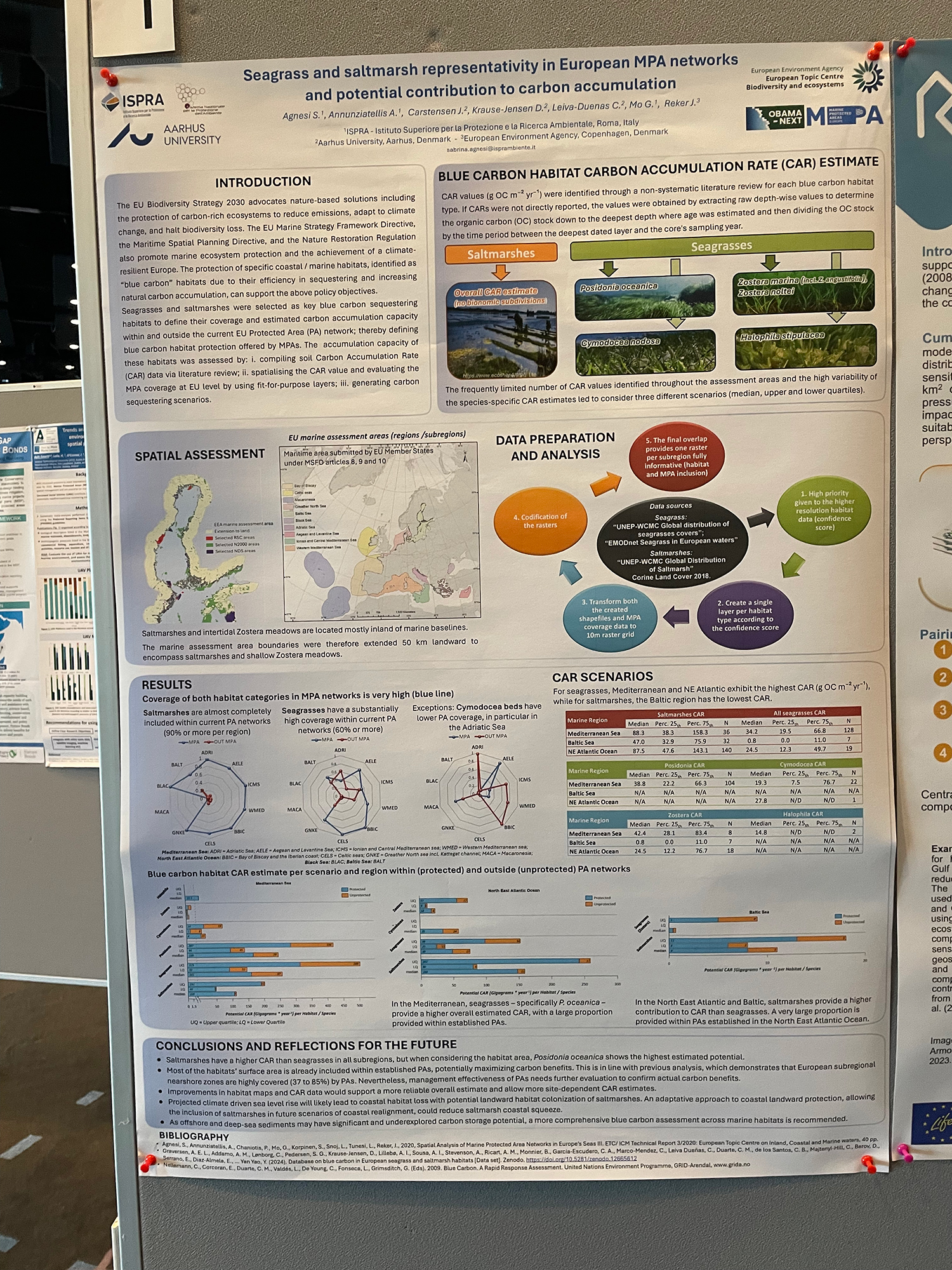Seagrass and Saltmarsh: Coastal Carbon Stores in Focus at MPAinMSP
At the MPAinMSP Conference, our partners from ISPRA showcased new research on the role of seagrass and saltmarsh habitats in carbon sequestration. Their findings contribute for supporting nature-based climate solutions within Europe’s MPAs.
At the recent MPAinMSP International Conference, our partners from ISPRA presented key findings on the role of seagrass and saltmarsh ecosystems in Europe’s Marine Protected Areas (MPAs). Their poster, titled “Seagrass and saltmarsh representativity in European MPA networks and potential contribution to carbon accumulation”, focused on the crucial role these habitats play in carbon sequestration.
The conference, which explored advances in marine biodiversity conservation, featured sessions on spatial planning, the effects of climate change, and the value of blue carbon. ISPRA’s contribution, developed under the MPA Europe project, aligns closely with OBAMA-NEXT’s mission to strengthen biodiversity observation and support EU policy goals.
Their work contributes to a broader understanding of habitat representativity in MPA networks—a core concern for OBAMA-NEXT as it develops tools to assess ecosystem functions and inform marine policy. By highlighting the carbon storage potential of coastal vegetated habitats, the ISPRA team reinforces the need for science-based planning in marine protection strategies.
MPAinMSP brought together scientists, policy experts, and planners to exchange insights on building resilient marine spaces. OBAMA-NEXT continues to integrate such advances into its toolbox, ensuring Europe is equipped with the data and knowledge needed for effective ocean governance.



